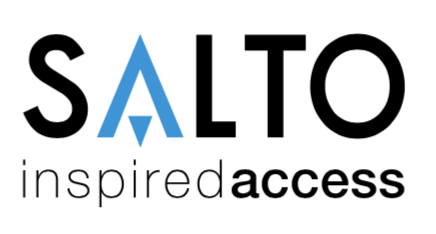
Trends in Security: The Future of Access Control in Healthcare
By SALTO
Security Resources SALTO
Sponsored by

The healthcare industry continues to adopt digital technologies to design new business processes, improve operations, and improve patient and staff experiences.
As they migrate towards advancing technology, these areas include improving overall building security which in today’s world means much more than locks on doors. Healthcare facilities in particular present unique access challenges. They must offer a welcoming environment – often 24/7 – for a constantly changing user base that includes staff, patients, volunteers, visitors, and suppliers. They also have to secure specific areas – operating rooms, patient data, pharmacies, labs, and more – that each might have their own varying levels of access needs.
Healthcare facility planners and administrators can find themselves navigating through a complex ecosystem of technologies, services, and providers that can leave them with more questions than answers. Will the access products they choose today work in the future? What trends in healthcare security are worth investing in? What about mobile access, apps, and other credentials? This short Q & A with Paul Cannon, SALTO North America Industry Leader for Healthcare, provides some helpful information on the future of access control in healthcare.
What software/technology trends are expected in the coming years?
Visitor management systems and mobile device usage will continue gaining traction in healthcare. We will see more interactive touch screens that can oversee many functions, including health screenings, emergency mustering, and attendance recording. The usage of mobile credentials will be integrated into these systems and offer users additional capabilities. One major benefit to deploying mobile access solutions is that it allows employees the option of leveraging an item they almost always have on them: a smartphone. This minimises the time, expense, and security risks associated with managing lost keys. It also improves the flow throughout a facility and gives the option for contactless access – which the industry found to be of utmost importance during the pandemic.
How has technology transformed the healthcare industry? And in what ways will software and technology change it in the coming years?
Technology has transformed the health- care industry in many different ways. At the patient level, it has helped to make information very accessible. Patient- centered thinking has been driving many of the technological advancements being implemented in healthcare facilities.
The future of healthcare includes technologies that will integrate multiple systems, such as a patient’s medical history, real-time health updates, insurance coverages, and access control management. The ultimate goal will be to use mobile devices as the primary tool to access this information. The end-user experience will continue to drive expansion into these newly digitized areas.
How can hospitals and other healthcare facilities gain patients’ trust when using new technology that they may be unaware of?
The first step is to educate the patient on the benefits of using the new technology. There is always resistance to any new process, so a well-thought educational program is critical in gaining the end user’s trust.
What about the maintenance of these newer technologies? What do hospitals and other healthcare facilities risk if regular maintenance isn’t operated?
Regular monitoring and maintenance of any system are critical. Being proactive with a defined program allows for fixable problems ahead of time, rather than a potentially larger challenge that may take place once the issue occurs. A good soft- ware and hardware maintenance plan can ensure that the software is updated with the latest version and that the hardware is in good working condition. Failure to upgrade these systems can leave openings in the security layer that make it easier for hackers to find vulnerabilities.
Is it worth the investment?
One thing is certain; technology will continue to advance. As it does, the healthcare systems and facilities that have decided to lean into the trans- formation and have adopted forward- looking strategies and flexible infra- structures will be better positioned for long-term success. The best way to secure any investment in technology is to make sure that the products under consideration are designed with the future in mind. Will the product work with yesterday’s infrastructure, today’s technology, and the technology of tomorrow? Hospitals cannot afford to rip and replace every time a new technology comes along.
For more information visit: saltosystems.ca
Print this page
Advertisement
- GardaWorld: Improved Security for the Canadian Healthcare Industry
- Curb to Core Healthcare Solutions
Leave a Reply